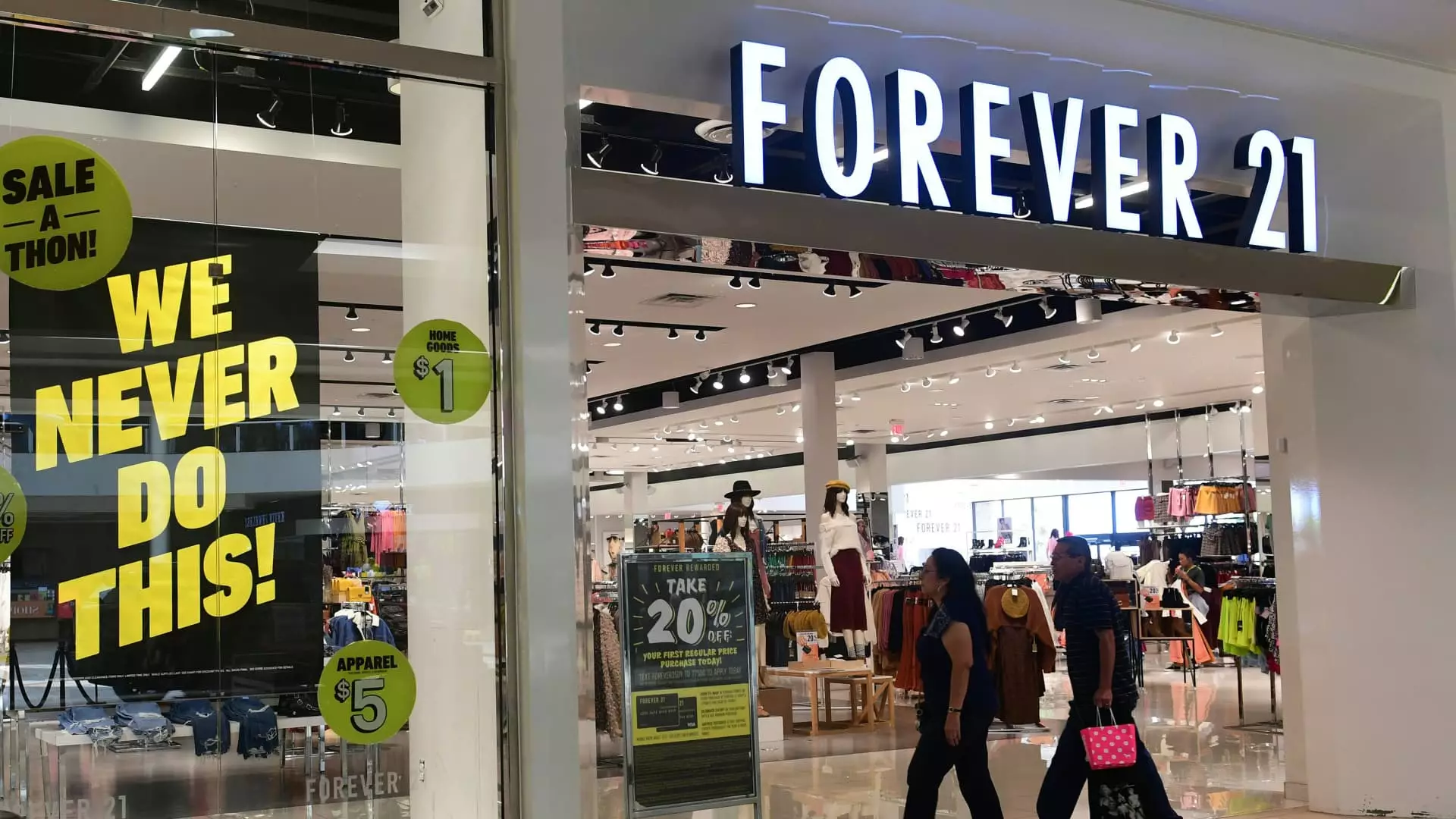Forever 21, once a dominant force in the fast fashion industry, now finds itself on the brink of potentially disastrous decisions. Industry insiders suggest that the retailer is actively engaging with liquidators as it grapples with an uncertain future compounded by heightened competition, rising costs, and a fading brand identity. The discussions on liquidation signal a desperate search for a lifeline, indicating the gravity of Forever 21’s current predicament as it considers a second bankruptcy filing.
Since its inception, Forever 21 captured the imagination of a fashion-forward youth demographic, providing trendy clothing at accessible prices. However, the landscape has markedly changed. Emerging competitors like Shein and Temu have quickly absorbed market share, utilizing efficient supply chains and advanced technologies such as artificial intelligence to anticipate and respond to fashion trends almost instantaneously—capabilities that Forever 21 has struggled to replicate. This evolution within the fast fashion sector presents an insurmountable challenge for Forever 21, rendering its previous strategy ineffective.
Furthermore, the company’s attempts to find a potential buyer have proven ineffective, as evidenced by its exploratory discussions surrounding liquidation options. Such measures could provide temporary relief, allowing the retailer to satisfy creditors in the absence of a new ownership structure. However, the implications of moving toward liquidation also reflect deeper issues revolving around business model sustainability and market relevance.
The financial difficulties of Forever 21 are not new. A pattern of unprofitability, exacerbated by mismanaged inventory and escalating operating costs, has been well-documented. With requests to landlords for steep rent reductions and an urgency to cut losses, it becomes evident that the retailer is scrambling for survival. While they previously explored options without the imminent threat of bankruptcy, the gravity of their financial situation has significantly worsened, pushing them closer to filing for Chapter 11 protection for the second time.
The challenges extended beyond the company’s operational inefficiencies. Forever 21’s partnership with Shein, initially viewed as a means to revive its fortunes, has been characterized as a “work in progress.” It raises questions about Forever 21’s future, especially as Shein continues to consolidate its market dominance. The juxtaposition of their strategies reveals a stark contrast: while Shein adapts fluidly and thrives, Forever 21 struggles to anchor itself in a rapidly moving market landscape.
Impending Bankruptcy: A Looming Threat
As reports circulate about the retailer contemplating a second bankruptcy filing, the potential impacts ripple throughout the retail industry. Forever 21’s first foray into bankruptcy in 2019, which yielded a restructuring and a revamped balance sheet, has not translated into long-term success. Instead, the brand seems to be drowning in its inability to modernize and stay relevant in an ever-evolving marketplace, continuously losing ground to nimble competitors.
Considerable questions linger regarding the future of Forever 21’s business model and customer engagement. The rapid expansion of e-commerce giants signifies a paradigm shift, much like what occurred with Amazon’s domination in retail, causing many traditional brick-and-mortar stores to face existential dilemmas. This shift starkly highlights how traditional retailers can be blindsided by changing consumer behaviors and technological advancements.
In contrast to the struggles laid out, it is crucial to examine the implications of intellectual property ownership. Authentic Brands Group, already entangled with Forever 21, highlights a troubling aspect of potential brand revivals. While the firm has profited from acquiring the intellectual property of struggling brands, the question remains whether they would invest further into reviving an entity that presents more financial risk than reward.
This unique dilemma underscores a broader trend within the retail sector: the cycle of bankruptcy and facade of revival often masks the inherent challenges these brands face. Without a clear vision and reinvigorated strategies, the intellectual property itself cannot shoulder the weight of the brand’s legacy and potential.
The fate of Forever 21 remains precariously balanced. The prospect of liquidation looms as a genuine concern, emphasizing the need for a critical reassessment of its business strategies. While the chances of recovery through new ownership or strategic alliances remain possible, the brand must adapt to the rapidly transforming landscape of retail. As it stands, Forever 21’s journey continues to be a cautionary tale echoed throughout the industry, highlighting the complexities of survival in the fickle arena of fast fashion.

